Tourism: Forging New Ground for Ecotourism and Other Alternatives”. Annual Review of Anthropology, No. 30, 261-2
116. Avieli, N., 2012. Rice talks - Food and community in a Vietnamese town, Indiana University Press, USA.
117. Barthes, R. 1998 [1957]. Mythologies. Tel Aviv: Babel (in Hebrew).
118. Becky Liu – Lastres. 2013. A Flash of Culinary Tourism: Understanding The Influences of Online Food Photography on People's Travel Planning Process on Flickr, Indiana University-Purdue University Indianapolis.
119. Burns, G. L. 2004. “Anthropology and Tourism: Past Contributions and Future Theoretical Challenges.” Anthropological Forum: https://www.researchgate.net/publication/29456605, 14/5/2020.
120. Burns, Peter. 1999. An Introduction to Tourism and Anthropology, Routledge: London and New York.
121. C. Michael Hall, Liz Sharples, Richard Mitchell. 2003. Food Tourism Around the World, Routledge: London and New York.
122. C. Michael Hall & Richard Mitchell. 2001. Wine and food tourism. In Special Interest Tourism: Context and Cases, Wiley.
123. C. Michael Hall & Richard Mitchell. 2001. Consuming Tourists: Food Tourism Consumer Behaviour. Food tourism around the world.
124. Cohen, E. 1979. “The Impact of Tourism on the Hill-Tribes of Northern Thailand”, Internationale Assien forum 10, pp. 5-38.
Có thể bạn quan tâm!
-
 Doanh Nghiệp Đề Xuất Giải Pháp Đưa Văn Hoá Ẩm Thực Bến Tre Đến Khách Du Lịch
Doanh Nghiệp Đề Xuất Giải Pháp Đưa Văn Hoá Ẩm Thực Bến Tre Đến Khách Du Lịch -
 Tăng Cường Nghiên Cứu, Lồng Ghép Hoặc Xây Dựng Hệ Thống Các Sản Phẩm Du Lịch Ẩm Thực Độc Lập Phục Vụ Nhu Cầu Đa Dạng Của Khách Du Lịch
Tăng Cường Nghiên Cứu, Lồng Ghép Hoặc Xây Dựng Hệ Thống Các Sản Phẩm Du Lịch Ẩm Thực Độc Lập Phục Vụ Nhu Cầu Đa Dạng Của Khách Du Lịch -
 Ẩm thực người Việt với du lịch ở tỉnh Bến Tre hiện nay - 21
Ẩm thực người Việt với du lịch ở tỉnh Bến Tre hiện nay - 21 -
 Danh Mục Các Món Ăn Đặc Trưng Ở Bến Tre
Danh Mục Các Món Ăn Đặc Trưng Ở Bến Tre -
 Ẩm thực người Việt với du lịch ở tỉnh Bến Tre hiện nay - 24
Ẩm thực người Việt với du lịch ở tỉnh Bến Tre hiện nay - 24 -
 Món Ăn Kết Hợp Chế Biến Qua Lửa Và Không Qua Lửa
Món Ăn Kết Hợp Chế Biến Qua Lửa Và Không Qua Lửa
Xem toàn bộ 243 trang tài liệu này.
125. Cohen Erik. 1979. “The impact of tourism on the hill tribes of Northern Thailand”, Internationale Asienforum 10, pp. 5-38.
126. Cohen, E. 1988. “Authenticity and Commoditization in Tourism”, Annals of Tourism Research 15 (3), pp. 371-386.
127. De Kadt. 1979. Tourism: Passport to development. Oxford University Press, UK.
128. Dixit, Saurabh Kumar. 2019. The Routledge Handbook of Gastronomic Tourism. Routledge.
129. Douglas, M. 1966. Purity and Danger: An Analysis of Concepts of Pollution and Taboo. London: Routledge and Kegan Paul.
130. Douglas Mary.1984. Food in the Social Order: Studies of Food and Festivities in Three American Communities. New York: Russell Sage Foundation.
131. Duong Bich Hanh. 2006. “The Hmong Girls of Sapa: Local Places, Global Trajectories, Hybird Identities”, PhD Dissertation, University of Washington.
132. Dwyer & Kim. 2003. “Destination Competitiveness: Determinants and Indicators”, Current Issues in Tourism 6 (5), pp. 369-414.
133. Edward, Tylor. 1865. Researches into the Early History of Mankind and the Development of Civilization. London: John Murray.
134. Evans-Pritchard, E. E. 1940. The Nuer. A description of the modes of livelihood and political institutions of a Nilotic people. Oxford: Oxford University Press.
135. Farrell, B. Editor. 1977. The social and economic impact of tourism on Pacific communities. Santa Cruz, Calif, Center for South Pacific Studies, University of California, Santa Cruz.
136. Finney, B., and K. WATSON. 1975. A new kind of sugar: Tourism in the Pacific. Honolulu: East-West Culture Learning Institute.
137. Firth, Raymond (1934), “The sociological study of native diet”, Africa 7(4): 401-414.
138. Fortes, Meyer and Sonia L Fortes (1936), “Food in the domestic economy of the Talensi”, Africa 9: 237-276.
139. Golino A., 2014. “Food from a Sociological Perspective”, ISK Italian Sociological Review, Vol. 4, No. 2, pp. 221-234.
140. Goody J., 1982. Cooking, Cuisine and Class, A study in Comparative Sociology, Cambridge University Press.
141. Graburn, N. 1983. “Anthropology of Tourism”, Annals of Tourism Research Vol. 10: 9-33.
142. Graburn, N. 1983. “Tourism: The Sacred Journey.” In Hosts and Guests. The Anthropology of Tourism, edited by VL Smith, pp. 21-36. 2nd edition. Philadelphia: University of Pennsylvania Press.
143. Greenwood, DJ. 1977. “Culture by the Pound: An Anthropological Perspective on Tourism as Cultural Commoditization.” In Hosts and Guests.
The Anthropology of Tourism, edited by VL Smith, pp. 129-38. Philadelphia: University of Pennsylvania Press.
144. Greenwood, DJ. 1977. “Culture by the Pound: An Anthropological Perspective on Tourism as Cultural Commoditization.” In Hosts and Guests. The Anthropology of Tourism, edited by VL Smith, pp. 129-38. Philadelphia: University of Pennsylvania Press.
145. Hitchcock, M., N. Stanley, & SK. Chung. 1997. “The South-East Asian Living Museum and Its Antecedents.” In Tourists and Tourism: Identifying with People and Places, edited by S Abram, J Waldren & DVL Macleod, pp. 197-
222. Berg: Oxford, England.
146. Hitchcock, M.,King, V.T & Parnwell, M. 1999. Tourism in South – East Asia,
Routleddge, London.
147. J.S. Perry Hobson & Uta C. Dietrich (1995). “Tourism, Health and Quality of Life”, Journal of Travel & Tourism Marketing, 3:4, 21-38, DOI: 10.1300/J073v03n04_02.
148. Kahn M. 1986. Always Hungry, Never Greedy: Food and the Expression of Gender in a Melanesian Society. Cambridge, UK: Cambridge University Press.
149. Kathleen M. Adams. 2006. Art as Politics: Re-Crafting Identities, Tourism and Power in Tana Toraja, Indonesia, University of Hawai’i Press Honolulu.
150. King, Victor. 2008. “Anthropology and Tourism in Southeast Asia: Comparative Studies, Cultural Differentiation and Agency.” In Tourism in Southeast Asia Challenges and New Directions, edited by Michael Hitchcock, Victor T. King and Michael Parnwell. Denmark: NIAS Press.
151. Kivela, J. & Crotts J. 2009. “Understanding Travelers' Experiences of Gastronomy Through Etymology and Narration”, Journal of Hospitality and Tourism Research 33(2): 161-192.
152. Knox, J. and C. Suggs. 1979. Tourism research priorities in Hawaii and the Pacific. Honolulu: University of Hawaii - Manoa.
153. Lockwood WG & Lockwood YR. 2000. Finnish American milk products in the Northwoods. In Milk: Beyond Diary, ed. H Walker. Proc. Oxford Symp. Food Cookery 1999, pp. 232-39.
154. Long, Lucy M. 1998. Culinary tourism, eating and otherness, Southern Folklore, 55 (3).
155. Long, Lucy M. 2004. Culinary Tourism. Lexington, University Press of Kentucky, 2004. Pp. XIV + 306, ISBN 0-8131-2292-9).
156. Mac, Cannell. 1973. “Staged Authenticity: Arrangements of Social Space in Tourist Settings”, American Journal of Sociology, 79,3,589-603.
157. Mac, Cannell. 1976. The Tourist: A New Theory of the Leisure Class,
Schocken Books, New York.
158. Mandala research. 2013. American Culinary Traveler, https://mandalaresearch.com/ wp- content/ uploads /2017 /01/ FREE_ DOWNLOAD_ American_ Culinary_ Traveler_ Report.pdf. 11/5/2020.
159. Merry I. White. 2011. Japanese Tourism and Travel Culture, National characteristics, Japanese.
160. Mintz, Sidney W. and Christine M. Du Bois. 2002. “The Anthropology of Food and Eating”, Annual Review of Anthropology, Vol. 31 (2002), pp. 99-119.
161. Murcott A. 1996. Food as an expression of identity. In: The Future of the National State: Essays on Cultural Pluralism and Political Integration, ed. S Gustafsson, L Lewin, pp. 49-77, Stockholm: Nerenius& Santerus.
162. Nash, D. 1981. “Tourism as an Anthropological Subject”, Current Anthropology 22 (5): 461- 468.
163. Nunez TA. 1963. “Tourism, Tradition, and Accul-uration: Weekendismo in a Mexican Village”, Ethnology 2: 347–52.
164. Oakes, T. 1998. Tourism and Modernity in China, London & New York: Routledge.
165. OECD. 2012. Food and the Tourism Experience: The OECD-Korea Workshop. OECD Studies on Tourism. OECD Publishing.
166. Richards, Audrey. 1932. Hunger and work in a savage tribe: A functional study of nutrition among the Southern Bantu. London: Routledge.
167. Richards, Audrey (1939), Land, labour and diet in Northern Rhodesia: An economic study of the Bemba tribe. Oxford: Oxford University Press.
168. S Abram, J Waldren & DVL Macleod. 1997. “The South-East Asian Living Museum and Its Antecedents.” In Tourists and Tourism: Identifying with People and Places, pp. 197-222. Berg: Oxford, England.
169. Sajana S. Shenoy. 2005. “Food tourism and the Culinary tourist”, A Thesis Presented to the Graduate School of Clemson University.
170. Schein. 2000. Minority Rules. The Miao And the Feminine in China’s Cultural Politics. Duke University Press, Durham & London.
171. Sloan, Philip and Legrand, Willy & Hindley, Clare. 2015. The Routledge handbook of sustainable food and gastronomy. Routledge.
172. Smith, V. Editor. 1977. Hosts and guests: The anthropology of tourism. Philadelphia: University of Pennsylvania Press Touring Club of Italy (1931), Guida Gastronomica d’Italia [The Gastronomic Guide to Italy], 1st edition. Touring Club of Italy, Italy.
173. Sofield, Trevor H. B. 2001. “Globalization, Tourism and Culture in Southeast Asia.” In Interconnected Worlds: Tourism in Southeast Asia, edited by Peggy Teo, T. C. Chang and K. C. Ho, pp.103–120. Oxford: Elsevier Science, Pergamon.
174. UNWTO. 1995. “UNWTO Technical Manual: Collection of Tourism Expenditure Statistics.” World Tourism Organization.
175. UNWTO. 2017. Second global report on gastronomy tourism, Affiliate Members Report, Volume sixteen.
176. Wilbur Zelinsky. 1985. Historical Evolution of Gastronomic Tourism, Pp. 24-31.
177. Wood, RE. 1997. “Tourism and the State: Ethnic Options and Constructions of Otherness”, In Tourism, Ethnicity, and the State in Asian and Pacific Societies, edited by M Picard & RE Wood, PP.1-34, Honolulu: University of Hawai’i Press.
178. Wolf Eric. 2006. Culinary tourism: The hidden harvest, Dubuque, IA: Kendall/Hun.
179. Wolf Erik. 2018. “Elements of Memorable Food, Drink, and Culinary Tourism Experiences”, Journal of Travel Research. Volume: 57 issue: 8, page(s): 1121- 1132. published: November 1, 2018
PHỤ LỤC
Phụ lục 1. BẢN ĐỒ
Bản đồ 1. BẢN ĐỒ HÀNH CHÍNH TỈNH BẾN TRE
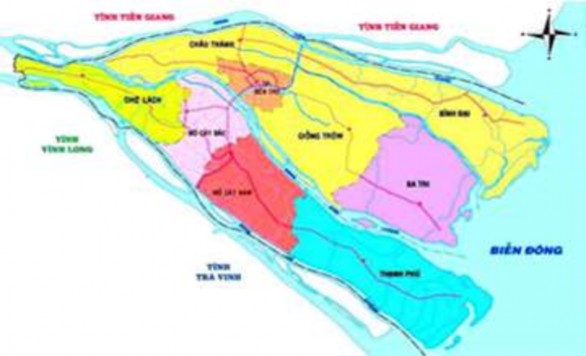
Nguồn: Uỷ ban nhân dân tỉnh Bến Tre
Bản đồ 2. BẢN ĐỒ DU LỊCH TỈNH BẾN TRE
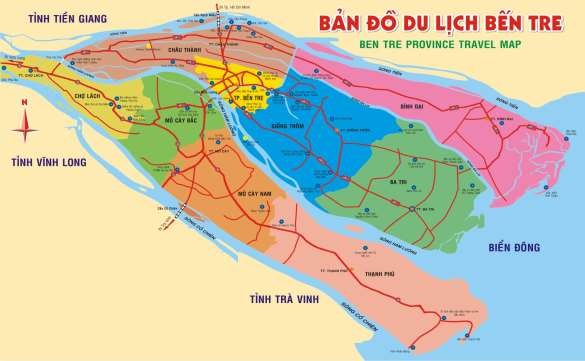
Nguồn: Sở Văn hoá, Thể thao và Du lịch tỉnh Bến Tre
Bản đồ 3. BẢN ĐỒ DU LỊCH THÀNH PHỐ BẾN TRE
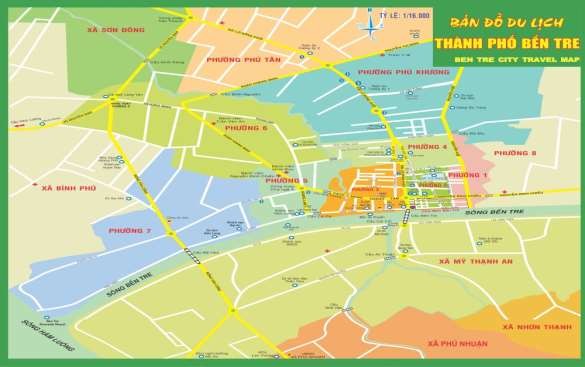
Nguồn: Sở Văn hoá, Thể thao và Du lịch tỉnh Bến Tre
Bản đồ 4. BẢN ĐỒ HÀNH CHÍNH HUYỆN CHÂU THÀNH
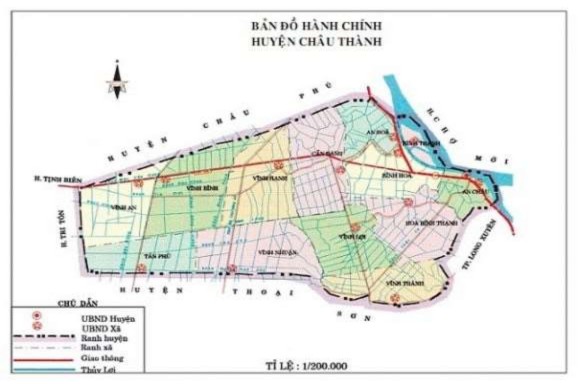
Nguồn: Uỷ ban Nhân dân huyện Châu Thành
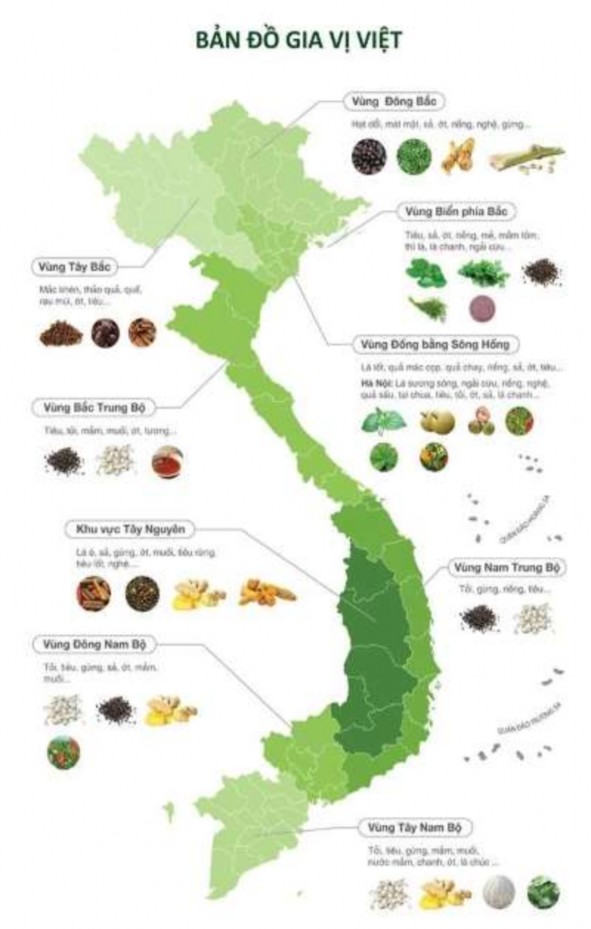
Nguồn: Internet






